Guido Borgianni “Il mangiatore di fagioli”
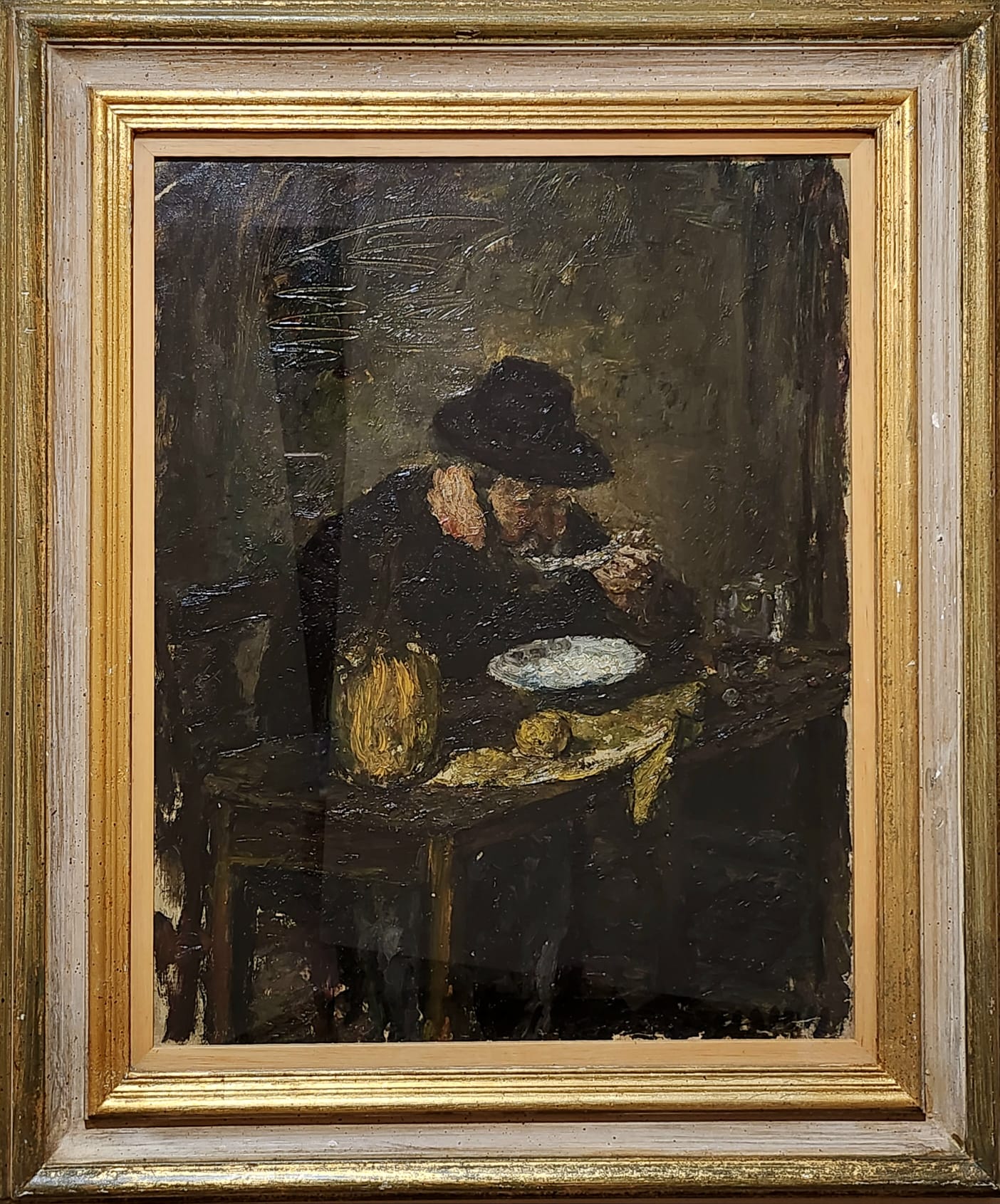
Guido Borgianni
“Il mangiatore di fagioli”
Olio su tela
cm 50×40
Anni ’40
Questo dipinto di Guido Borgianni rimanda inevitabilmente al dipinto di Annibale Carracci con il medesimo soggetto e conservato alla Galleria di Palazzo Colonna a Roma, ma anche a “I mangiatori di patate” di Vincent Van Gogh.
Può apparire strano come dipinti di epoche tanto lontane trovino un fil rouge ad unirle. Possiamo però facilmente percepire la vicinanza che le accomuna, soprattutto per le atmosfere e l’emotività. Queste sono tutte persone unite da una malinconia e da un destino che sembra non dar scampo loro ad una vita di miseria.
Autori questi che tentano di nobilitare quel vivere contadino senza sovrapposizioni triviali e caricaturali come osserviamo ad esempio nelle pitture di genere di Vincenzo Campi.
I fagioli per altro da sempre rappresentano un alimento povero di cui si nutrivano i ceti più umili e quindi snobbato dalla borghesia e nobiltà che trovavano nella carne uno stendardo gastronomico del loro potere.
In questa solitaria mestizia troviamo il mangiatore di Borgianni, ricurvo e afflitto su quel pasto che parla di miseria ma anche di dignità, una consapevolezza amara mangiata a cucchiaiate.
Guido Borgianni
“The Bean Eater”
Oil on canvas
cm 50×40
1940s
This painting by Guido Borgianni inevitably reminds us of Annibale Carracci’s painting with the same subject in the Galleria di Palazzo Colonna in Rome, but also of Vincent Van Gogh’s ‘The Potato Eaters’.
It may seem strange how paintings from such distant epochs find a common thread to unite them. However, we can easily perceive the closeness that unites them, especially in their atmospheres and emotionality. These are all people united by a melancholy and a destiny that seems to give them no escape from a life of misery.
These authors attempt to ennoble that peasant way of life without trivial and caricatured superimpositions as we observe in Vincenzo Campi’s genre paintings, for example.
Beans, on the other hand, have always represented a poor food on which the most humble classes fed themselves and were therefore snubbed by the bourgeoisie and nobility who found in meat a gastronomic banner of their power.
In this solitary sadness we find Borgianni’s eater, bent and distressed over that meal that speaks of misery but also of dignity, a bitter awareness eaten by the spoonful.

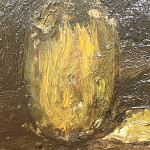
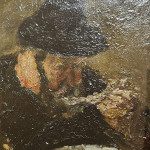
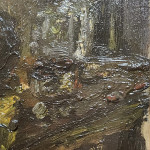
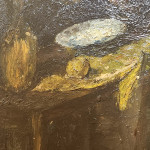
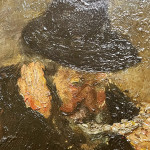
Commenti recenti